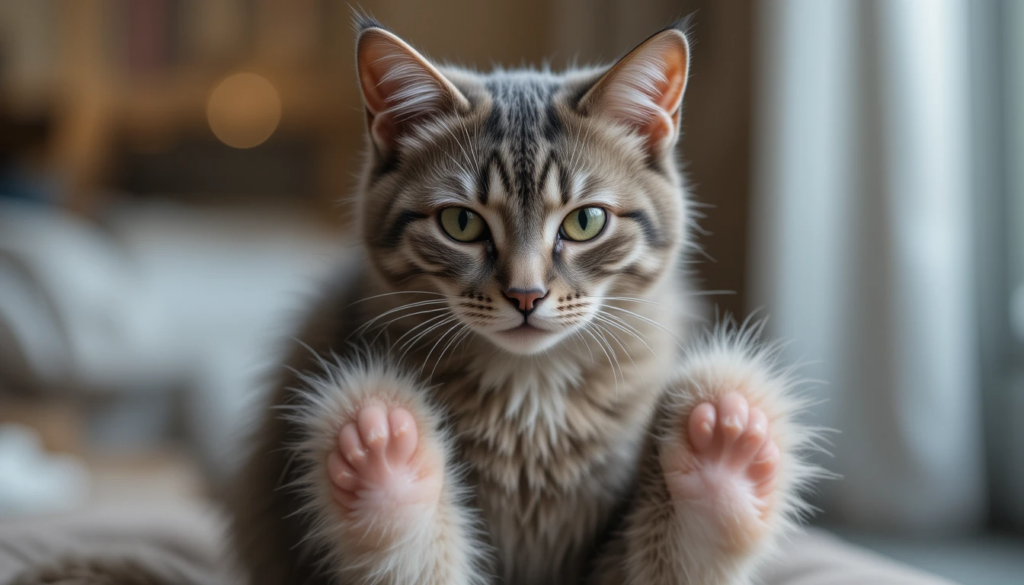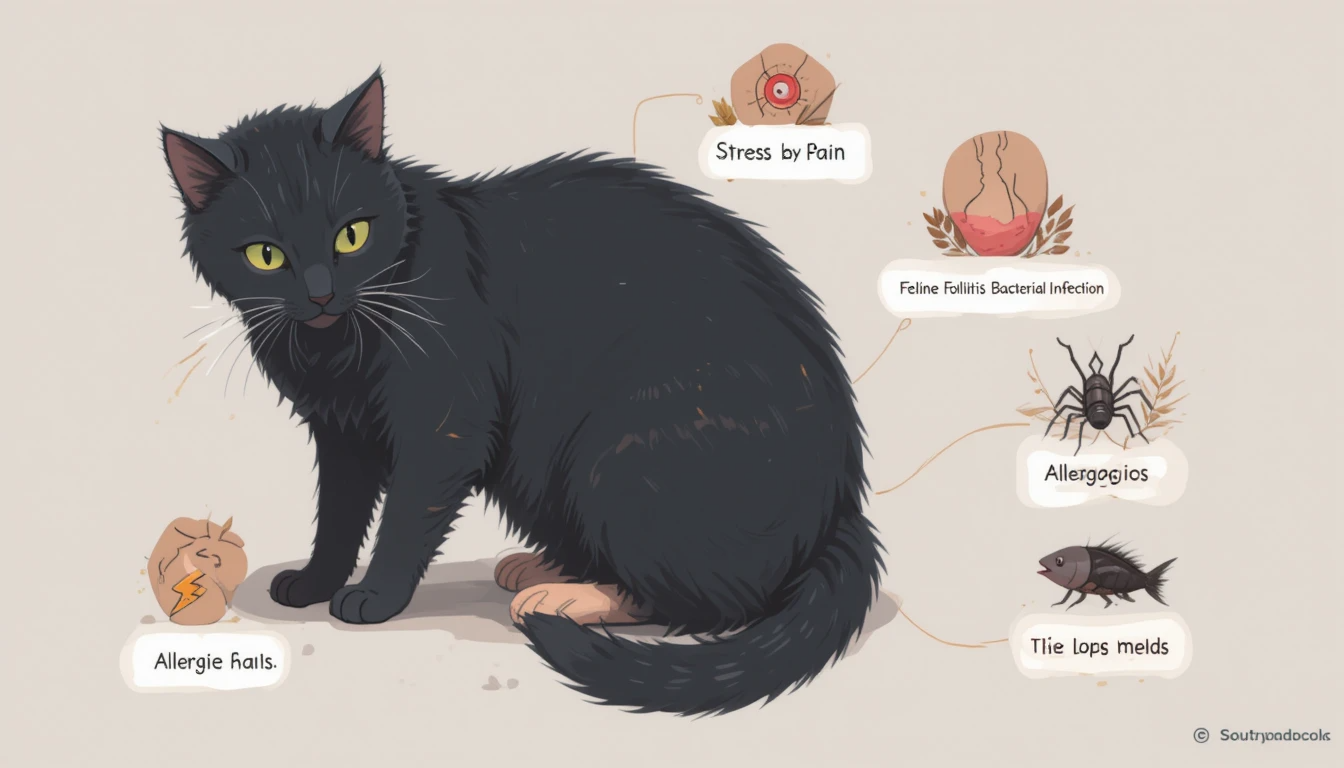Why Is My Cat Losing Hair on Their Back Legs? Understanding the Problem
When you start noticing bald patches or thinning fur on your cat’s back legs, it’s easy to feel worried—and rightfully so. While normal shedding is part of a healthy feline’s routine, sudden or patchy hair loss could be your cat’s way of telling you something’s wrong. Whether it’s due to fleas, allergies, infection, or stress, it’s important to take action quickly to help your kitty feel safe, healthy, and comfortable again.

Let’s walk you through the possible causes of hair loss on your cat’s back legs and what steps you can take to support their recovery.
1. Fleas and Parasites: Tiny Pests, Big Problems
Fleas are one of the most common causes of sudden hair loss in cats—especially around the hind legs, tail, and neck. Even one flea bite can spark an intense allergic reaction called Flea Allergy Dermatitis (FAD). This causes unbearable itching, prompting your cat to lick, chew, and bite at the irritated spots, leading to fur loss, scabbing, and even infection.
It’s not just fleas—mites and ringworm can also trigger similar symptoms. These parasites irritate the skin and lead to compulsive grooming or scratching.
What You Can Do:
- Keep your cat on monthly vet-approved flea prevention—even indoor cats can get fleas!
- Schedule a checkup to rule out mites or fungal infections.
- Treat your home environment to stop recurring infestations.
2. Pain Can Lead to Overgrooming
Cats are masters at hiding pain. But sometimes, when they’re uncomfortable—especially in areas like their joints or lower abdomen—they may groom those areas excessively. This is often seen in cats dealing with arthritis or feline urinary tract issues, and it usually shows up as bald spots on the inside of the back legs, belly, or genitals.
What You Can Do:
- Look for signs of pain such as limping, hiding, or avoiding jumping.
- Work with your vet to create a pain relief plan that might include medications, acupuncture, or supplements.
- Never ignore repeated grooming in one area—it could be your cat’s only cry for help.
3. Allergies: Food, Environment, and Fleas
Just like us, cats can develop allergies. These can be triggered by things in their diet (usually certain proteins), their environment (like dust or mold), or—you guessed it—fleas.
Symptoms may include:
- Itchy skin
- Excessive grooming
- Hair loss, especially on the legs or belly
What You Can Do:
- Talk to your vet about a food elimination diet or a hydrolyzed protein diet.
- Remove allergens from your home environment where possible.
- Treat flea allergies seriously—even a single bite can set off an intense flare-up.
4. Stress and Anxiety: When Grooming Becomes a Coping Mechanism
Cats are creatures of habit, and even small changes in their environment can cause emotional stress. Over time, this stress can show up as compulsive grooming, especially on areas like the back legs, belly, and inner thighs. This condition, known as psychogenic alopecia, can result in hair loss even without visible skin inflammation.
Common triggers include:
- Moving to a new home
- New pets or people in the household
- Boredom or lack of enrichment
- Conflict between cats
What You Can Do:
- Provide hiding spots, climbing structures, and plenty of playtime.
- Stick to consistent daily routines.
- Use feline calming sprays or diffusers that mimic natural pheromones.
- Talk to your vet about possible behavior-modifying therapies or supplements.
How to Prevent Hair Loss on Your Cat’s Back Legs
While not all causes of feline hair loss can be avoided, here are simple steps to help your cat thrive:
- Keep stress low: Provide safe, quiet spaces and maintain routine.
- Stay on top of flea prevention: Use vet-recommended treatments monthly.
- Feed a balanced diet: Avoid low-quality foods and ask your vet about allergy-friendly options.
- Regular vet checkups: Early detection of issues like arthritis or infections can make all the difference.
- Enrich their life: Interactive toys, puzzle feeders, and attention can go a long way.
When to See the Vet
If your cat is suddenly losing hair on their back legs, don’t ignore it—especially if you notice itching, scabs, or behavioral changes. Early diagnosis can make treatment easier and less stressful for both you and your furry companion.
Your cat depends on you to notice the subtle signs that something isn’t right. By seeking help early, you’re giving them the best chance to recover and return to their happy, healthy selves.
Final Thoughts
Watching your cat lose their beautiful fur can be heartbreaking, but you’re not alone—and your cat doesn’t have to suffer in silence. From fleas to food sensitivities to emotional stress, there are many reasons your cat might be overgrooming or losing hair. Thankfully, most causes are treatable with the right care, love, and veterinary guidance.




